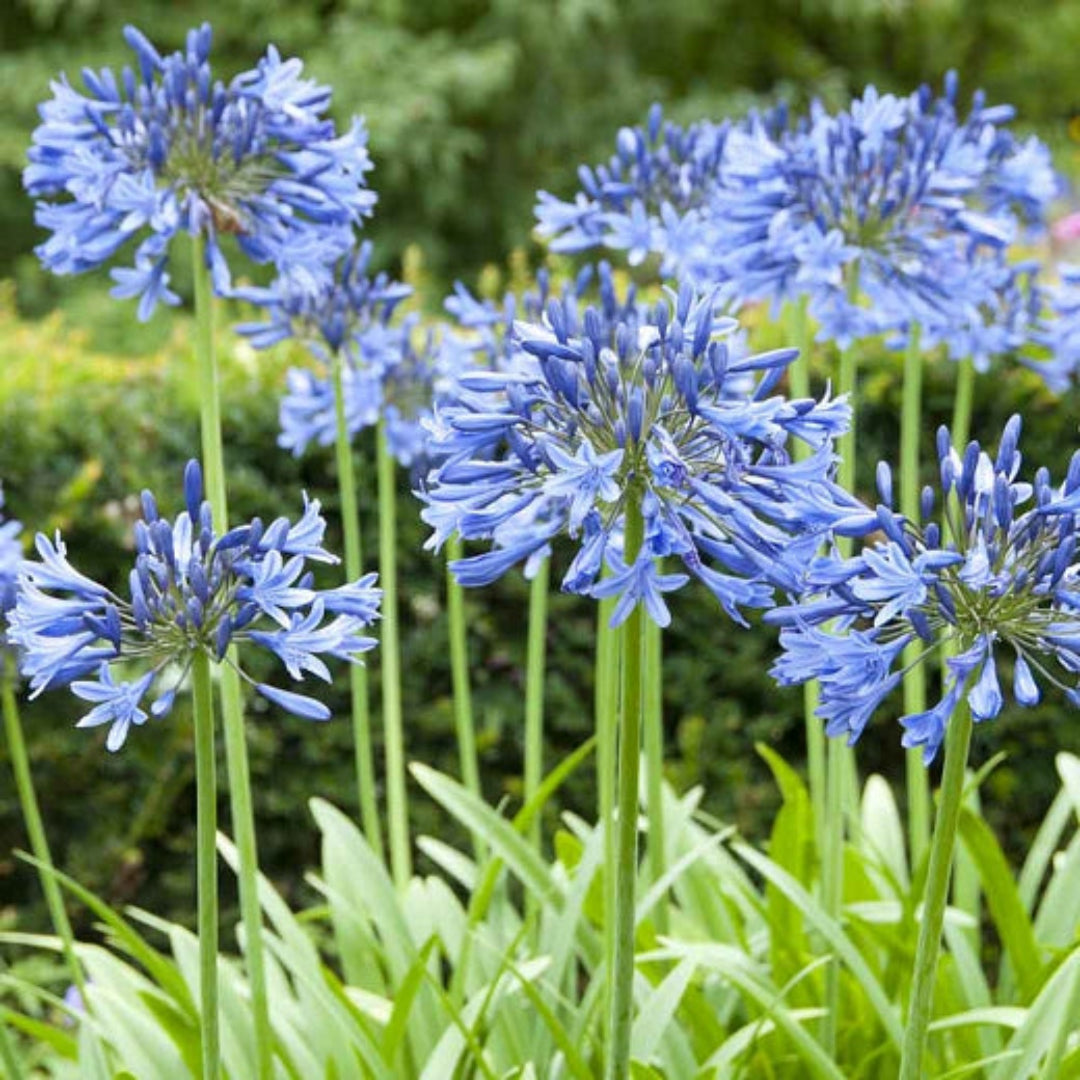Grasping the Art of Agapanthus Care: Important Steps for Healthy Development and Lively Flowers
In the realm of horticulture, the farming of agapanthus stands as a gratifying venture for those that look for to support these stylish blooming plants. From selecting the appropriate selection to understanding trimming strategies, the trip towards cultivating growing agapanthus plants is multifaceted and holds the essential to opening the full possibility of these agricultural treasures.

Selecting the Right Agapanthus Range

When selecting the appropriate Agapanthus range for your garden, take into consideration factors such as climate suitability, bloom shade, and development routine. Agapanthus, frequently referred to as Lily of the Nile or African lily, is available in a variety of colors ranging from tones of purple and blue to white. Pick a bloom color that matches your existing garden palette to develop an unified landscape. Furthermore, think about the environment in your region to ensure the Agapanthus variety you pick can prosper in your particular problems. Some selections are much more forgiving of chilly temperatures, while others favor warmer climates. Comprehending the growth behavior of different Agapanthus ranges is important for proper positioning within your yard. Some selections have a clumping growth behavior, perfect for containers or boundaries, while others have a more dispersing nature, suitable for ground cover or mass plantings. By very carefully examining these variables, you can choose the ideal Agapanthus range to improve the appeal of your garden.
Ideal Planting Problems
Considering the optimal ecological needs is essential for effective Agapanthus growing. Agapanthus plants are delicate to chilly temperature levels and ought to be safeguarded from frost during winter months.
To guarantee healthy and balanced growth and vibrant blooms, plant Agapanthus bulbs at a depth of regarding 2-4 inches and area them 8-12 inches apart. Adding raw material, such as compost, to the dirt can enhance water drainage and fertility, advertising robust origin advancement. Mulching around the base of the plants assists keep moisture and reduces weed growth. Regular watering is vital, particularly throughout the expanding period, to keep the soil constantly wet but not saturated.
Watering and Feeding Tips
Preserving appropriate dampness levels and offering necessary nutrients are vital aspects in the care routine for Agapanthus plants. When it comes Website to watering Agapanthus, it is vital to strike an equilibrium. These plants favor regularly moist soil but are susceptible to root rot if overwatered.
Fertilizing Agapanthus is essential for advertising healthy development and prolific blossoms. Apply a well balanced fertilizer, such as a 10-10-10 formula, in the very early spring as new development arises. Repeat this application every 6-8 weeks throughout the growing period. Stay clear of extreme fertilizing, as it can result in lavish foliage at the expenditure of flowers. Constantly comply with the manufacturer's directions for correct dilution and application techniques. By following these watering and feeding pointers, you can ensure your Agapanthus plants grow and generate vibrant, lasting blooms.
Trimming Strategies for Agapanthus
Trimming Agapanthus plants at the proper times and with proper techniques is crucial for keeping their wellness and advertising optimum growth and blooming. The optimal time to trim Agapanthus is in late wintertime or very early springtime prior to brand-new development arises.
Deadheading invested blossoms can also reroute the plant's power into generating more blossoms instead than establishing seeds. If you desire to accumulate seeds for propagation, leave some flowers to fully grown and completely dry on the plant.
Remember to utilize clean, sharp devices to make specific cuts and decrease the danger of presenting diseases. Agapanthus. Normal pruning will certainly aid keep your Agapanthus looking cool and healthy and balanced while guaranteeing an abundant display screen of lovely flowers
Taking Care Of Common Parasites and Illness
After making certain appropriate trimming techniques for Agapanthus, it is crucial to deal with usual parasites and diseases that can influence the health and vigor of these plants. One usual bug that impacts Agapanthus is the Agapanthus gall midge.
In addition, Agapanthus plants additional hints can experience visit here from root rot if they are grown in inadequately draining pipes dirt. By being alert and taking timely action against conditions and pests, you can aid your Agapanthus plants thrive and produce dynamic flowers. Agapanthus.

Verdict
To conclude, grasping the art of agapanthus treatment entails picking the appropriate selection, supplying optimal planting conditions, proper watering and feeding, proper pruning strategies, and resolving typical insects and diseases. By complying with these vital actions, you can make certain healthy and balanced development and dynamic blooms for your agapanthus plants. Bear in mind to routinely keep an eye on and maintain your plants to advertise their overall health and long life.
To make sure healthy and balanced development and vivid flowers, plant Agapanthus bulbs at a deepness of regarding 2-4 inches and room them 8-12 inches apart. By complying with these watering and fertilizing pointers, you can guarantee your Agapanthus plants prosper and generate vivid, resilient flowers.
One usual bug that impacts Agapanthus is the Agapanthus gall midge. Furthermore, Agapanthus plants can experience from origin rot if they are planted in inadequately draining dirt. By complying with these essential steps, you can ensure healthy development and dynamic flowers for your agapanthus plants.